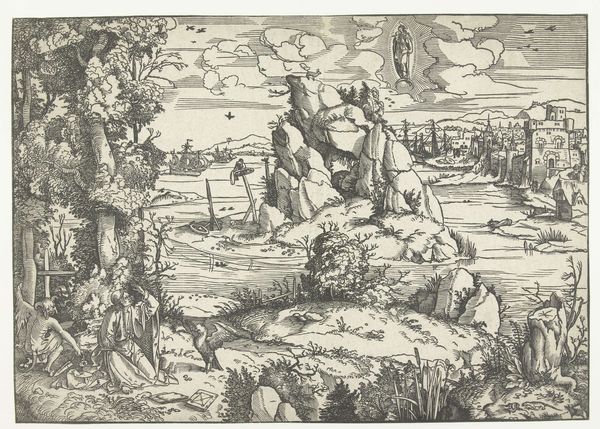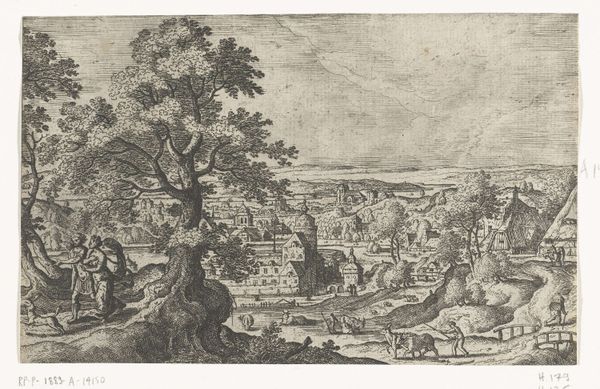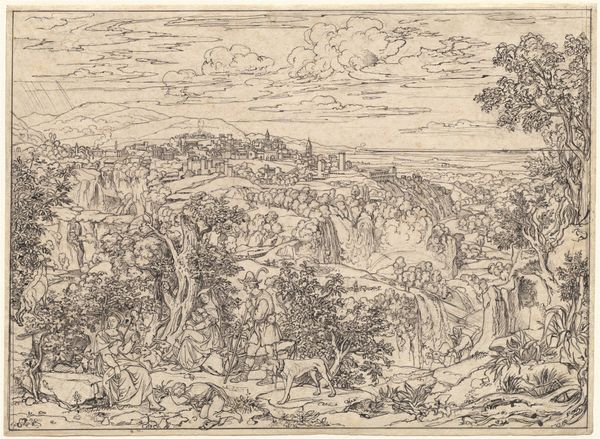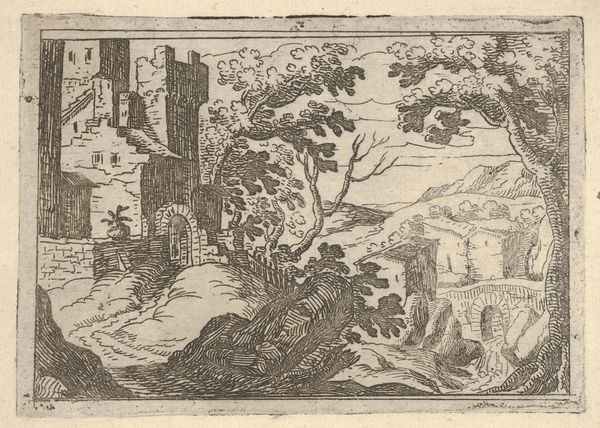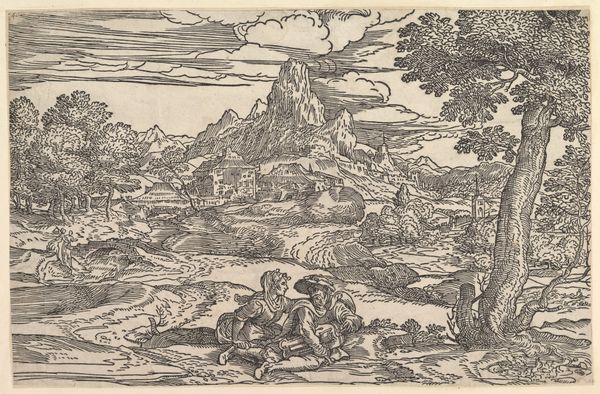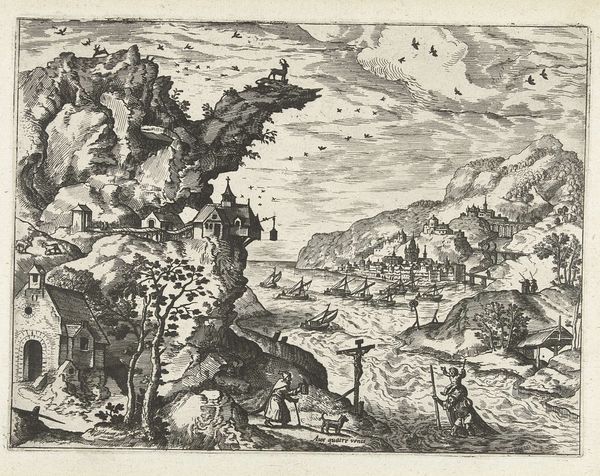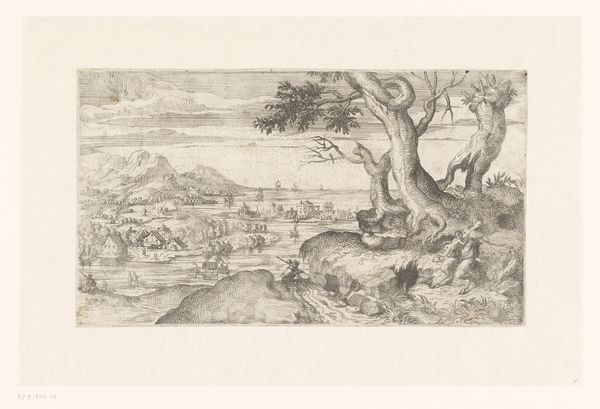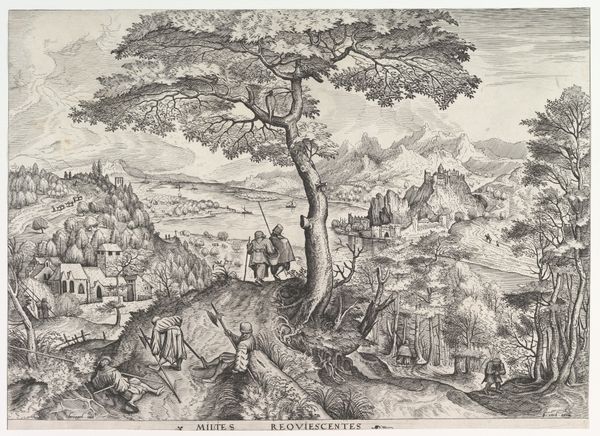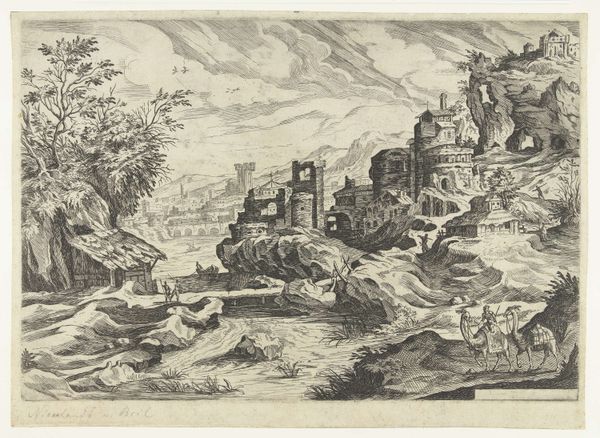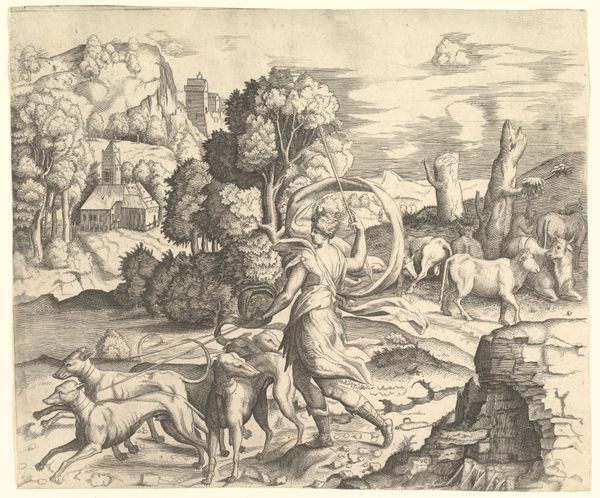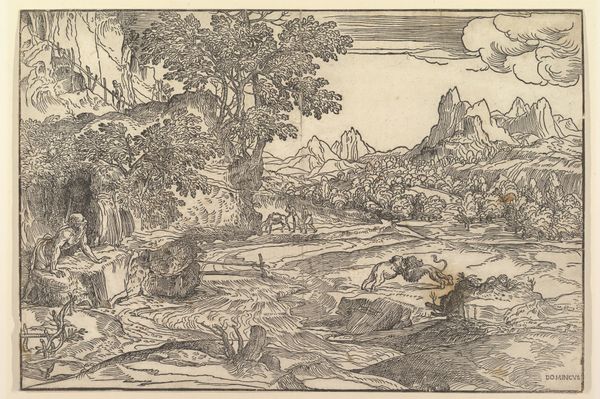
print, etching
#
pen drawing
# print
#
etching
#
landscape
#
genre-painting
#
italian-renaissance
Dimensions: plate: 23.5 × 28.2 cm (9 1/4 × 11 1/8 in.) sheet: 23.6 × 28.4 cm (9 5/16 × 11 3/16 in.)
Copyright: National Gallery of Art: CC0 1.0
Curator: Here we have Angelo Falconetto's etching, "Imaginary Landscape with an Amorous Couple," created around 1560. Editor: It strikes me immediately as a scene brimming with concealed meaning. The composition is very precise. Curator: Absolutely. Consider the social context. This piece emerged during the Italian Renaissance, where genre paintings served as commentary on class, courtship, and societal expectations. The landscape itself, with its cultivated gardens and wilder areas, reflects the dual nature of human control versus natural instinct. Editor: Yes, that resonates strongly. Landscape art of the Renaissance and afterwards, even depictions of the mundane, are often replete with symbolism and mythic allusions. Look at how he contrasts the architectural forms with the verdant chaos around them! The dog at their feet traditionally represents fidelity. Curator: Indeed. The presence of an amorous couple hints at themes of pleasure and transgression. Is it an innocent scene or a representation of something more dangerous? The Italian Renaissance saw much social critique masked as genre painting. Editor: And beyond societal critique, one has to see classical echoes as well. Garden scenes in arcadian mode are an integral part of Greco-Roman mythology, the Hesperides for instance, always referring back to some deeper psychological archetype. Curator: A good point, considering the overt references to architecture too! The classical informs all of it. The scene isn't simply a snapshot; it's deeply embedded in a broader cultural and historical narrative of desire and virtue. The ambiguity creates a compelling tension, particularly concerning our perception and possible moral judgment. Editor: The overall impression is of two different symbolic levels in counterpoint, of an imagined space that is at once timeless and fully a product of its era. Curator: Seeing the world through that lens opens so many paths to meaning. It is why Falconetto continues to challenge us across centuries. Editor: He's not merely illustrating an encounter but invoking a much broader visual language that resonates on levels far beyond the purely decorative.
Comments
No comments
Be the first to comment and join the conversation on the ultimate creative platform.
